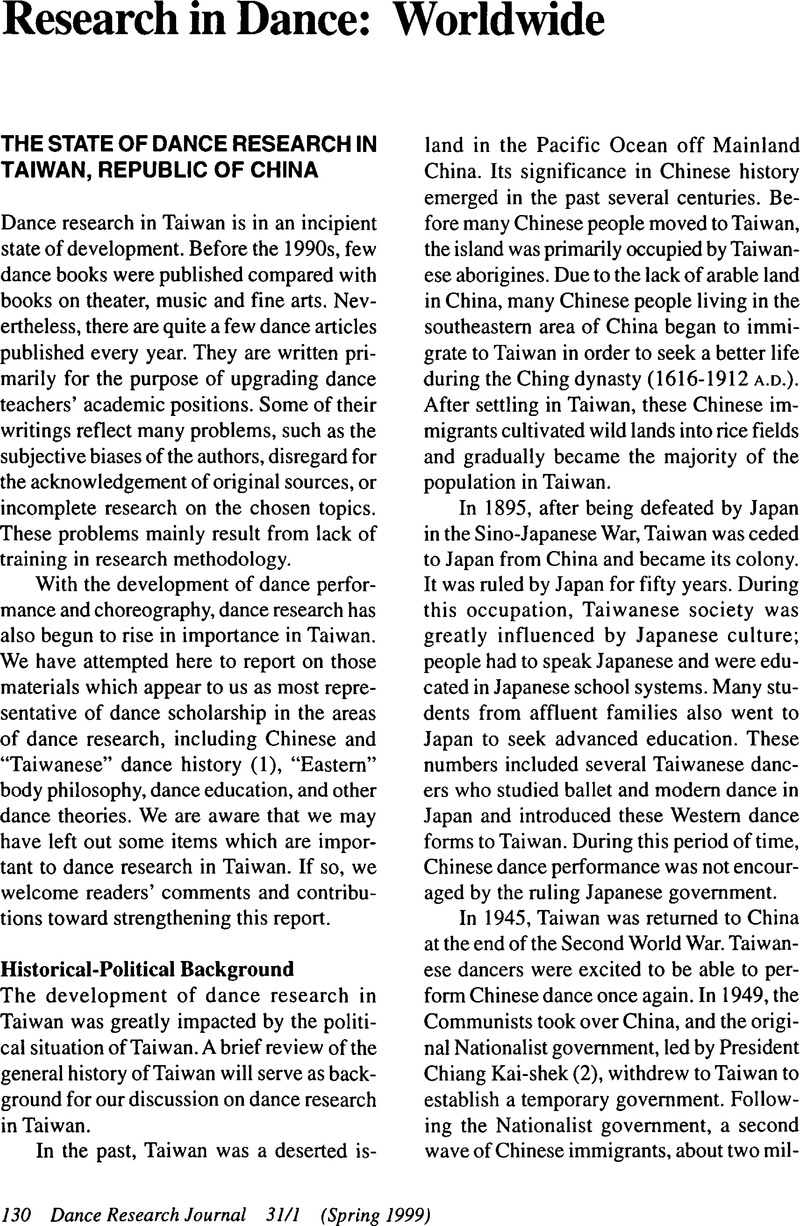Article contents
The State of Dance Research in Taiwan, Republic of China
Published online by Cambridge University Press: 22 July 2014
Abstract

- Type
- Research in Dance: Worldwide
- Information
- Copyright
- Copyright © Congress on Research in Dance 1999
References
NOTES
1. The research on Chinese dance history means that Taiwanese researchers study dances developed in China and in the time before the establishment of the Republic of China in Taiwan in 1912. Consequently, the research on “Taiwanese” dance history includes Chinese dances developed in indigenous Taiwan, or Chinese dances in Taiwan after 1912.
2. All of the Chinese names in this report are placed in the order of the family name and then the given name.
3. The nine indigenous tribes in Taiwan are the Atayal, Saisiyat, Bunun, Tsou, Paiwan, Rukai, Puyuma, Ami, and Yami.
4. After the conference, journalist Lu Jian-ying published a report on Taiwanese dance history from the 1940s to 1990s in Performing Arts Review 33 (July 1995): 7–21.
5. These six dance pioneers are Gao Yan (studied by Wu Man-li), Tsai Rui-yuei (studied by Chen Ya-pin), Liu Fun-Hsueh (studied by Zhang Li-zhu), Li Tian-min (a self-study), Li Tsai-e (studied by Chao Chi-fang), and Li Shu-fen (studied by Lu Jian-ying).
6. Thus far, there are six dance programs on the college level in Taiwan, including the following institutions: Chinese Cultural University, National Institute of the Arts, National Taiwan College of Arts, Taiwan College of Home Economics, National Taiwan College of Physical Education, and Taipei Physical Education College. Among these institutions, NIA is the sole one offering graduate programs in dance (performance and choreography).
- 2
- Cited by


